Yesterday, June 11, 2015, Ron Moody passed away. This makes me quite sad in ways that I really am unable to discuss out loud. So I thought I’d write down some of those thoughts instead.
For those of you who don’t know, Ron Moody was most famous for his role of Fagin, in both the London stage version and movie version of Oliver!, which in turn was based on the book by Charles Dickens called Oliver Twist or The Parish Boy’s Progress.
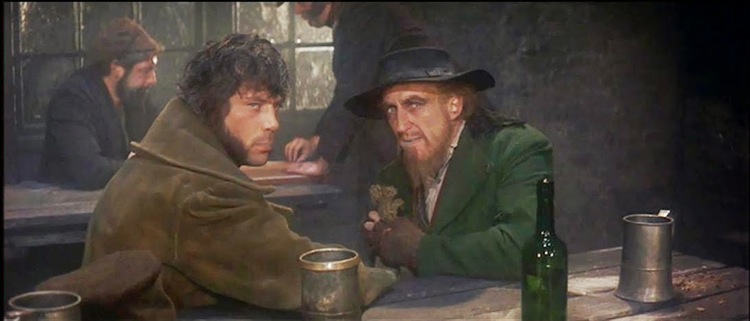
Bill Sikes (Oliver Reed) and Fagin (Ron Moody)Currently, there are many articles about him and his career, and his position on playing this notorious character, and how he died in a hospital at age 91. Those are the facts, you know, as journalism is wont to put it, the who, when, why, and where. I think, however, that the Daily Mail’s article does a better job of discussing the small details that usually get left out (due to space limitations, and do those actually exist on the internet?), but are included to describe Ron Moody’s life and career in more depth, which he most certainly deserves.
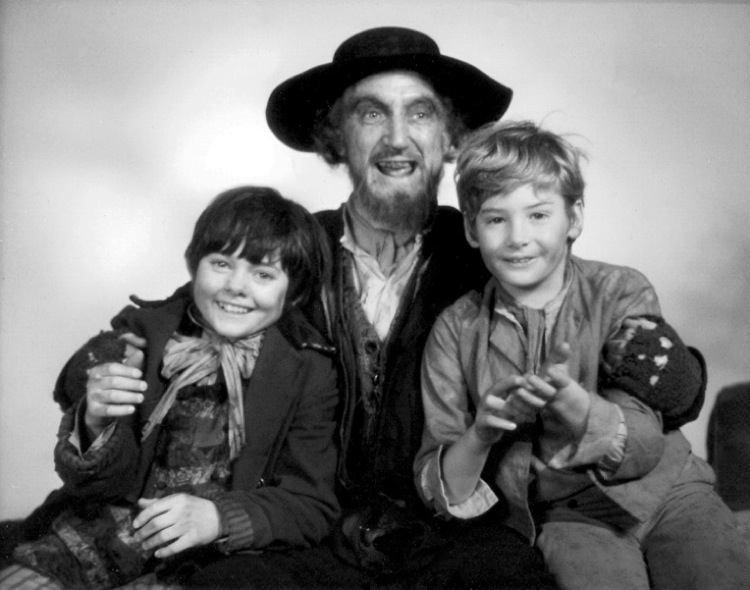
Although I’m a big fan of the movie Oliver!, I never wanted to know too much about behind-the-scenes stuff, because that would have ruined the magic for me. Granted, I was a regular subscriber to Tiger Beat magazine, and knew Mark Lester and Jack Wild’s hat and shoe size, so that I could send them many presents, on their birthdays, care of the Tiger Beat office. Oh, to be twelve again and to really, really believe that entering a contest via Tiger Beat would actually get me a date with David Cassidy! (I’m pretty sure I was a very strong contender.)
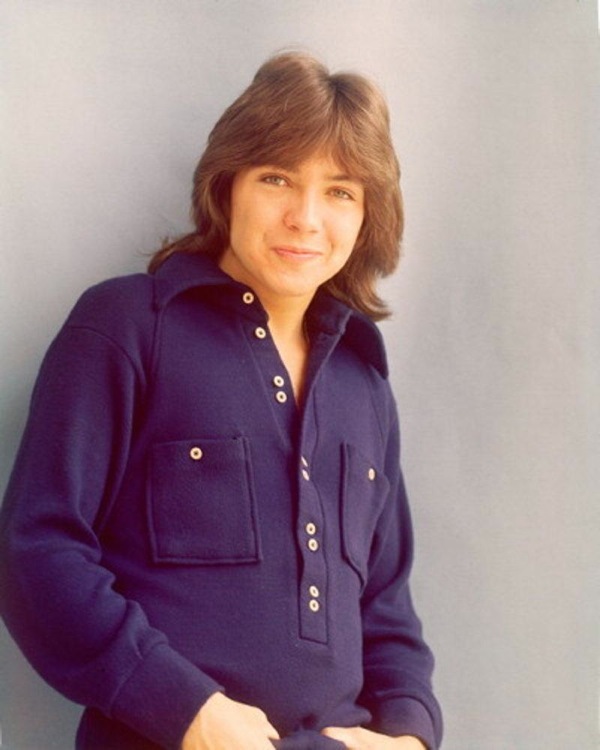
Though, from a distance, it’s now nice to find out about the making of the movie, for example, from this December 2012 article from The Guardian, about how nice Harry Secombe (Mr. Bumble) was to Mark Lester.
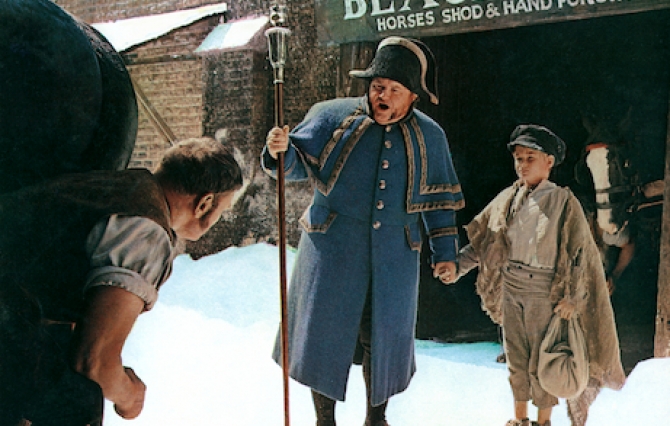
Or how scary Oliver Reed (Bill Sikes) was to the young boys on set because he was a method actor who got into character and stayed there.
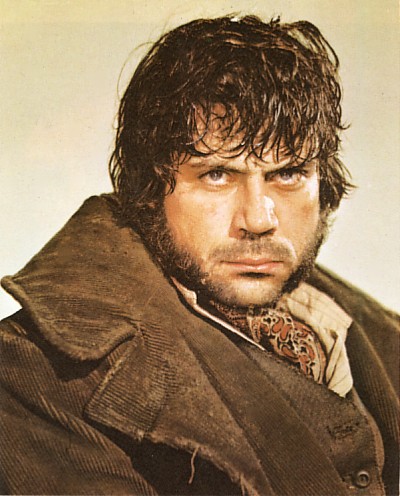
But the most striking thing that Ron Moody said about his portrayal of the character of Fagin, was that he was disturbed by the anti-semitic tones of Dickens’ description of the character, and determined instead to “get Fagin away from a viciously racial stereotype and instead make him what he really is – a crazy old Father Christmas gone wrong.” And how he wanted to make the boys on the set laugh to put them at their ease.
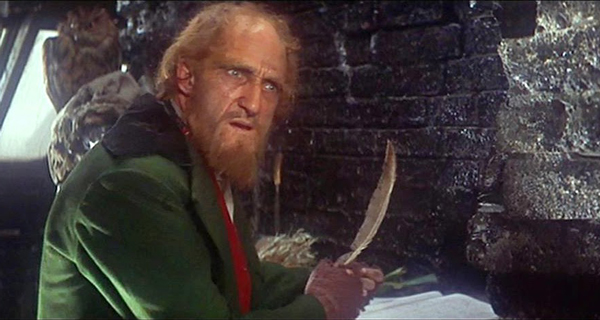
This he did to great effect, making the movie version of Fagin far more sympathetic than he is in the book. For example, in the first scenes with Fagin (from the book), you learn that he is responsible for sending some of his fellow thieves to the gallows, in order to save his own neck. That is, he peaches! Which is, in the honor-among-thieves tradition, the worst thing you can do. (It means “to inform against an accomplice or associate.”)
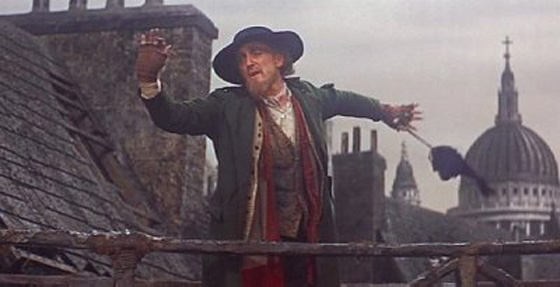
I also enjoyed reading about how Ron Moody made up a step in his Be Back Soon number that he later found out was called a pas de basque, but that his least favorite scene to film had been I’d Do Anything, Personally, I’d Do Anything is my favorite on account of how Fagin’s got a comical feather in his hair and a graceful twirl to his beautiful bottle-green coat.
When I wrote Fagin’s Boy, it was some years before I read the article from The Guardian, but I had already picked out the idea from the actual novel that there had to be some fatherly aspect to Fagin’s character in order to draw young boys to him. For surely in London there would have been other fences such as Fagin for the boys to go to and work for, yet they picked him. I always imagined that in order to keep boys Fagin had to feed them and clothe them, given the Victorian standards of the day, and also to create a sort of glamour that would make his den and his pack of street wolves the most attractive to be associated with. So I describe his character as a bit more caring about the boys’ creature comforts and more attentive to their safety and health. (Though he’s still insistent that each boy pull his own weight by bringing in stolen goods for Fagin to sell!)
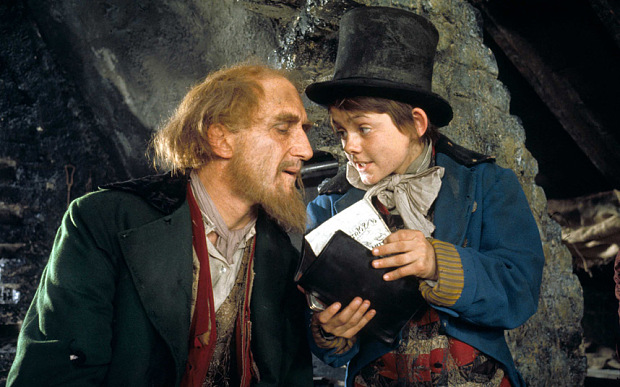
Hence, for Jack, his memories of Fagin are covered with glitter and sparkle, and he believes that Fagin was the best thing that ever happened to him. Oliver, on the other hand (my Oliver, not Dickens’ version), figures out early on that Jack has rose-colored glasses with regard to Fagin, though to Oliver’s credit, he does not, as they say, disabuse Jack of this notion.
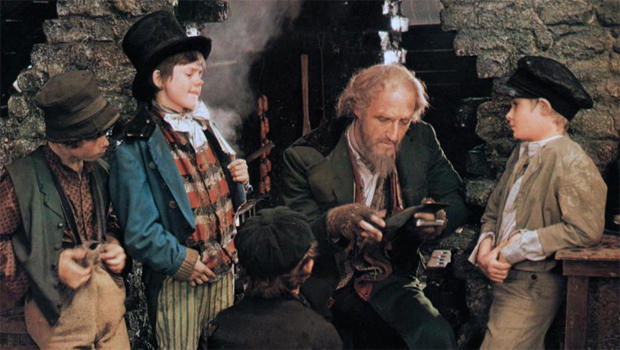
As for myself, I have  memories of this movie from when I saw it in 1969 in London. I have the LP record and the coloring book. Somewhere, I also have the playbill for the movie theater (they did them in those days) from the night that we attended. I remember, especially, given my young and easily distracted mind, being drawn right into the screen and into this world of orphans and pickpockets.
For some reason, I related to the characters so intensely, that they became hardwired in my brain, and were never far from my thoughts. I even, at the tender age of ten, took a stab at reading Oliver Twist by Charles Dickens but found myself disturbed by the dark tones, and what was to me a dearth of Oliver’s active presence in any of the scenes. He seemed to be quite passive, and was perhaps purposefully drawn as a two-dimensional character in order to represent a larger idea, that of the helpless and downtrodden.
This I vowed to rectify at some point in the future, when I’d figured out exactly what a sentence fragment was and how to avoid them. Ron Moody’s representation of Fagin had a lot to do with this, for I always wondered at the juxtaposition between the tone of the character when he was with Bill Sikes or when he was with Oliver. Even back then I was impressed by his ability to make the character have so many facets. Not that I knew what a facet was, at least not back then! But Ron Moody’s Fagin was part and parcel of that time in my life, when I was young and impressionable. And though I’m certain that his stamp on my just-developing psyche has left many dark, edgy corners and fog-shrouded, Victorian-looking alleyways, I wouldn’t have it any other way.
And to finish, a little bit more about David Cassidy. (Hey, he came in to my life right after Oliver! did!)
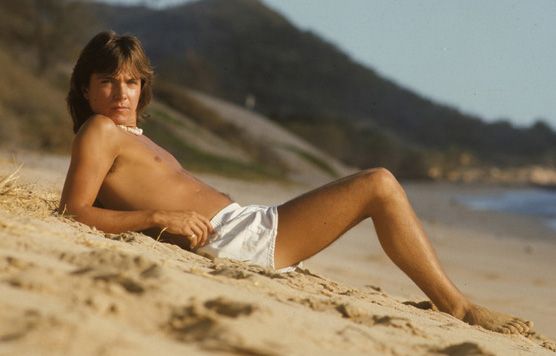
The following video is of their performance of “I Think I Love You,” which, when I first heard it, blew my socks off. I know today we think that the song is cheesy, but, up until that time, I’d never really heard a song that resonated with me so hard. I fell in love instantly, head over heels, with David, and have fond memories of my school-aged dreams of meeting him one day.
Oh, Ron Moody! I loved him so much in Oliver! He was the perfect mixture of cackling villain, kind father figure, manipulative “peacher”, and lost and tormented human being.
He was truly the mixture that you described. I remember going back and reading the book and being shocked at how terrible the original Fagin was, manipulative and cruel. I believe that it was Fagin’s manipulation of what Noah (Morris Bolter) told him, that Fagin told Bill, that got Nancy killed. But Ron’s Fagin put a nicely different spin on things.
I was also shocked at how different Book Fagin was from Movie Fagin. Book Fagin is portrayed in such a very racist and very classist way as a vile and cowardly half-demon who knowingly gets Nancy killed to get her out of his way. Movie Fagin is a criminal but treats the boys in his care with rough kindness and tenderness and yells after Bill when Bill goes after Nancy to “not do anything violent!” He also always seems to be unconsciously shielding the boys from Bill whenever Bill comes to the hideout. I don’t know how much of this is due to the director’s reinterpretation of the book and how much to Ron Moody’s amazing acting ability, but I’d say Ron definitely had something to do with it.
Shocked is the word for it! And also, at the end where Fagin actually dies? And in the middle, when Jack disappears? And how Oliver is nowhere to be found when Bill gets shot? All those differences between the movie and the book, I think, create this idea that Oliver Twist is a kid’s book. (Kind of like people generally think that The Count of Monte Cristo is a kid’s book, when the original is filled with so many adult themes.)
Ron did a great deal to rescue the character from being maligned.
The differences between the book and musical version of Oliver Twist remind me of the differences between the book and Disney movie version of The Hunchback of Notre Dame. In both cases, the original book version is so bleak and anti-Semitist/racist that the changed version is often welcomed with open arms. But then, of course, that leads to the debate about the morality of sanitizing books which contain outdated values.
Oh God, who thinks The Count of Monte Cristo is a kid’s book?
People think that The Count of Monte Cristo is a kid’s book on account of the way it was first expurgated in the 1846 for English readers, and was then watered down from there, until there was no trace of hashish smoking or sex parties. It became something quite tame compared to what it was originally. I’m still making my way through Robin Buss’s translation myself.
And Oliver and Jack read The Count of Monte Cristo in AT LODGINGS IN LYME, too.
Indeed they did, the 1846 expurgated version. Alas, they were unable to finish it, though I’m thinking if it fits in, they might later.